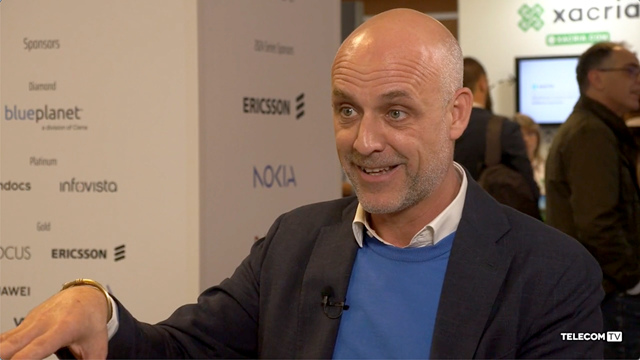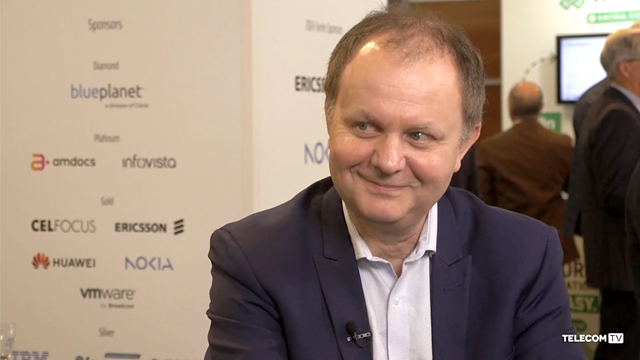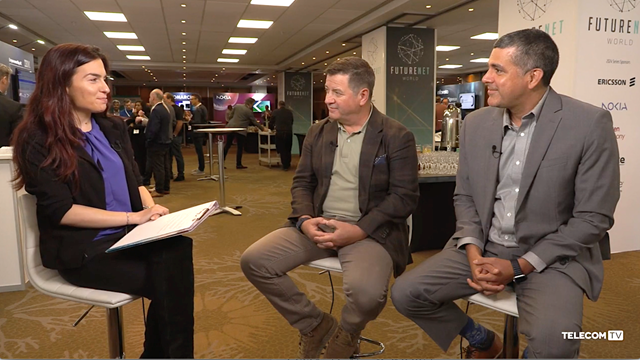
Nokia at MWC19 (picture courtesy of Nokia)
- New Nokia fibre broadband tech has massive bandwidth capacity
- Cost efficiency thanks to tried, tested and mature ecosystem
- Immediate application in 5G transport services as well as for enterprises and residential markets
- Battle is joined over 25 Gbps PON (the West) and 50 Gbps PON (China)
Nokia's welcome resurgence continues unabated. This morning the flying Finnish phoenix announced the commercial availability of its 25 Gbps symmetrical Passive Optical Network (PON). The new system is commonly referred to as 25G but please, please don't confuse that with yet another generation of mobile phone evolution, as it is it's hard enough to get our heads around the notion of 6G when 5G is still toddling around in diapers and leaving sticky finger marks everywhere.
25G PON is based on, and fully utilises, the extant, large and mature ecosystem of optical technologies used in data centres around the world. The new technology co-exists with GPON and XGS-PON and requires no changes to any outside plant, so it is straightforward to introduce and deploy and is available on the ubiquitous Nokia FX access platform. As far as early use cases are concerned the solution enhances convergence on a Passive Optical Network and provides high-capacity, low-latency 5G, enterprise and domestic residential transport services on single-fibre infrastructure. The system is based on Nokia's purpose-built Quillion chipset.
Nokia claims to be the first in the world to offer commercial 25G PON fibre broadband and says that its solution is unique in that it works seamlessly with the company's suite of existing next-generation PON hardware products including access nodes and line cards. A press release published this morning emphasises that the new product is designed for both simplicity and cost-efficiency thanks to the use of Nokia's own Quillion chipset which permits not only the support of 5G mobile transport but also 10G service for enterprises.
In essence, telcos and CSPs that already have 10G Quillion chipsets deployed will already have potential 25G capabilities available in their networks. As Nokia's 2G PON can co-exist with GPON and XGS-PON on the same infrastructure, CSPs etc. will be able, rapidly and easily, to overlay 25G with no disruption whatsoever to existing customer services, giving them the opportunity quickly to capitalise on a prime commercial advantage.
CSPs are only too well aware that burgeoning 5G mobile transport and premium enterprise services require the rapid increase of PON network speeds beyond 10G and this awareness is evidenced in the creation of the 25GS-PON MSA Group, a coalition of CSPs, system vendors, and chipset and optical component manufacturers with the goal of quickly achieving the standardisation and the availability of 25G PON.
Another China v the West schism is splitting the world
As more and more fibre-optic networks and systems are deployed, Nokia (and others) hope and expect that 25G PON will become an infrastructure technology underpinning the global telecom sector thanks to its inherent capability to deliver any service to any end point. Nokia says its new solution "will leverage the high volumes and mature ecosystem of data centre optical technologies to achieve the best cost point, huge capacity, fastest time-to-market, and simplest evolution path compared to 50G PON, which will require a massive technology leap or long time to mature."
Nokia's commitment to 25G PON has been emphasised and reiterated many times in recent months and, in some quarters, that position has been seen as controversial given the geographically partizan and sometime fractious nature of the debate between those that support the 25G standardisation process and those that champion the 50G PON standard.
As was the case some 70 years ago when the world split into different camps over which colour television standards should be introduced in different geographies and political spheres of influence (PAL, NTSC, SECOM) rather than agreeing on a single global standard, the whole sorry and disruptive performance seems about to be repeated with PON where a schism is emerging between those in the 25G camp and opponents favouring 50G. It now seems probable that the world will divide into two manufacturing and purchasing camps, the Western and the Chinese.
At the beginning of this year Huawei announced that it would back a 50G standard for "F5G" (standing for "Fixed 5G.") and said it expected it to be taken up initially by the mobile infrastructure market for connecting RAN radio systems to baseband systems and for backhaul. Thereafter, Huawei said, the market for residential PON would develop and be followed by enterprise campus connectivity as a replacement for Ethernet switches. Huawei's analysis and rationale had the support of Chinese telcos, the European standards organisation ETSI and Altice, a Portuguese operator.
Meanwhile, Nokia went ahead and developed the Quillion suite of chips that supports both GPON (Gigabit Passive Optical Networks) and next generation PON technologies. The Finnish company emphasises that at an ITU meeting held in February this year to examine the merits of 25G PON, 18 ITU members voted in favour of that standard.
They included big hitters including ATT, BT, Korea Telecom,Telecom Italy, SK Telecom and Telus. However a minority group led by Chinese operators and vendors declined to back the proposal on the grounds that 50G PON, whilst admittedly more expensive and difficult to implement, is a technological leap into the future. However, with the West plus South Korea opting for evolution and the Chinese for revolution the result was yet another standards stalemate.
Nokia has ploughed its own furrow and worked with CSPs, telcos and suppliers wanting to evolve to 25G PON now (and without necessarily ratifying the ITU standard) thus making it the de facto standard in the West with the option to move incrementally to 50G PON at some point in the future. Nokia stresses that 25G PON has the common optical technology and capability with the Ethernet switches that are still so commonplace in data centres and campus switching sites and points out that the sharing of such common attributes and mature technology will keep costs down while making deployment simple.
There's also the little matter that Huawei now finds itself to be a pariah in many parts of the world as different countries turn their back on the company and rip Huawei equipment out of their networks. As an increasing number of western CSPs, telcos and network operators move to replace Huawei equipment in their fixed and mobile network infrastructures, Nokia has first-mover advantage where 25G PON is concerned and should do very well out of the opportunity. And by the time 50G PON becomes a necessity and thus a global reality, Nokia should also be in pole position to take advantage of the change. Not a bad place to be for a company risen from the dead - and loving it.
Email Newsletters
Sign up to receive TelecomTV's top news and videos, plus exclusive subscriber-only content direct to your inbox.




